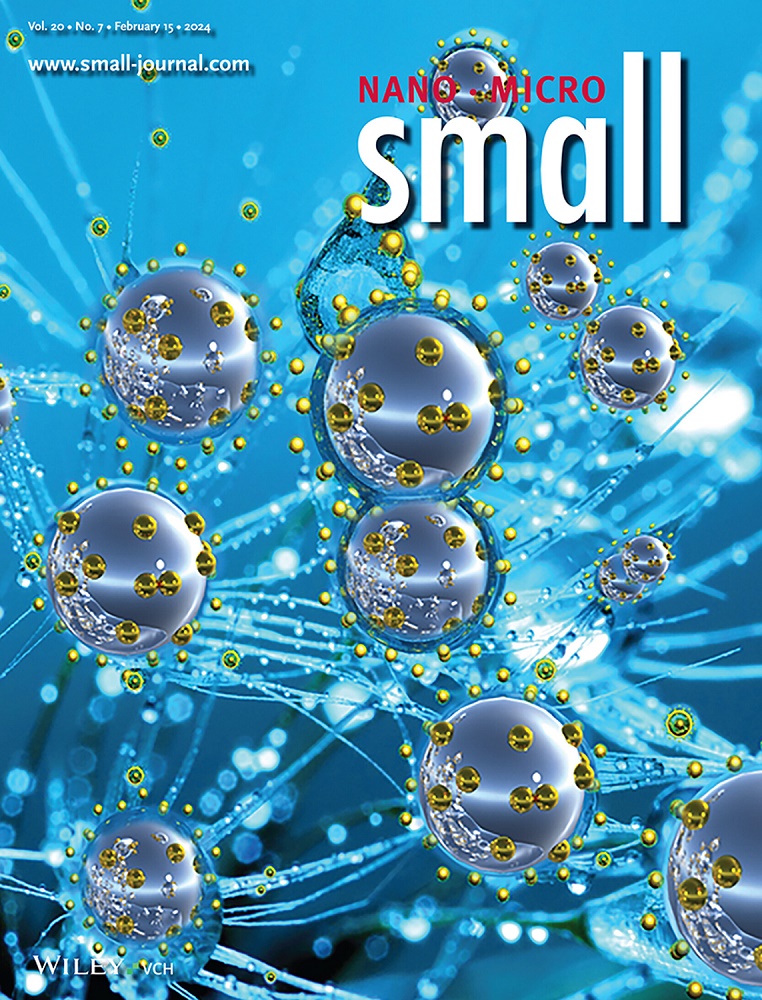A (111) Facet‐Dominated Carbon Dots‐Perovskite Composite Crystal Matrix for Highly Stable Photodetector
IF 13
2区 材料科学
Q1 CHEMISTRY, MULTIDISCIPLINARY
引用次数: 0
Abstract
Crystal facet orientation plays a key role in dominating the optoelectronic conversion and stability of perovskite devices. To date, in‐depth understanding on how to control the orientation of crystal facet and its’ effect on the optoelectronic properties of perovskites remains a significant challenge. Here, a strategy for manipulating the facet orientation of methylammonium lead bromide (MAPbBrA(111)面控碳点钙钛矿复合晶体基质用于高稳定光电探测器
晶面取向对钙钛矿器件的光电转换和稳定性起着关键的控制作用。迄今为止,深入了解如何控制晶面取向及其对钙钛矿光电性能的影响仍然是一个重大挑战。本文提出了一种利用碳点(CDs)控制甲基溴化铅(MAPbBr3)钙钛矿单晶面取向的策略,该策略可以通过选择性地降低特定晶体面表面能来暴露(111)面,同时通过加入CDs来改善光电性能。实验和理论研究表明,CDs更倾向于吸附在(111)面上,而(111)面主导的CDs -钙钛矿复合晶体基质的光电性能明显优于(100)面主导的钙钛矿晶体。因此,(111)面主导的钙钛矿光电探测器表现出优异的性能,其响应率高达249.09 a W−1,探测率为1.19 × 1014 Jones。更重要的是,未封装的光电探测器表现出显著的稳定性,在90 d内保持了93%的初始性能。本工作为通过晶面取向调制策略提高卤化物钙钛矿光电探测器的性能,特别是稳定性提供了一种新的途径。
本文章由计算机程序翻译,如有差异,请以英文原文为准。
求助全文
约1分钟内获得全文
求助全文
来源期刊

Small
工程技术-材料科学:综合
CiteScore
17.70
自引率
3.80%
发文量
1830
审稿时长
2.1 months
期刊介绍:
Small serves as an exceptional platform for both experimental and theoretical studies in fundamental and applied interdisciplinary research at the nano- and microscale. The journal offers a compelling mix of peer-reviewed Research Articles, Reviews, Perspectives, and Comments.
With a remarkable 2022 Journal Impact Factor of 13.3 (Journal Citation Reports from Clarivate Analytics, 2023), Small remains among the top multidisciplinary journals, covering a wide range of topics at the interface of materials science, chemistry, physics, engineering, medicine, and biology.
Small's readership includes biochemists, biologists, biomedical scientists, chemists, engineers, information technologists, materials scientists, physicists, and theoreticians alike.
 求助内容:
求助内容: 应助结果提醒方式:
应助结果提醒方式:


